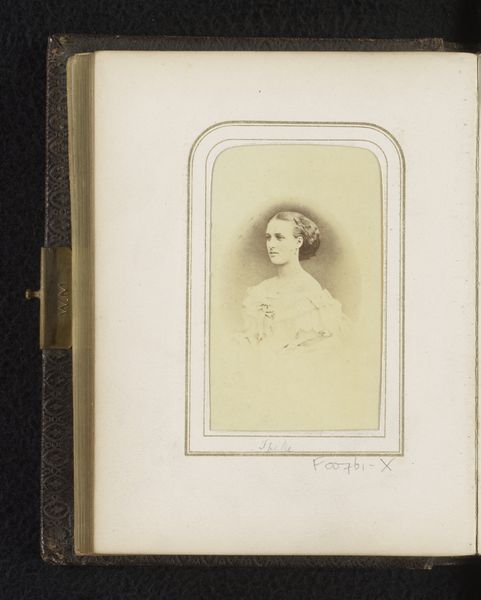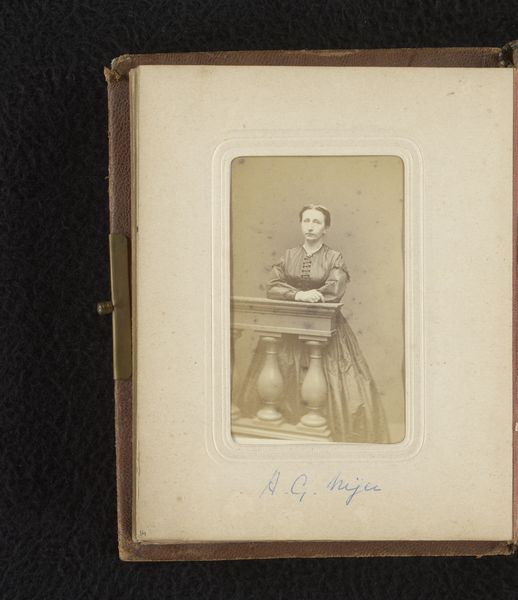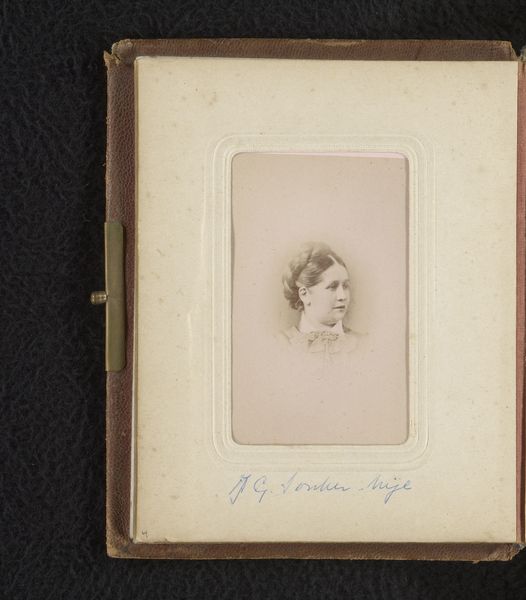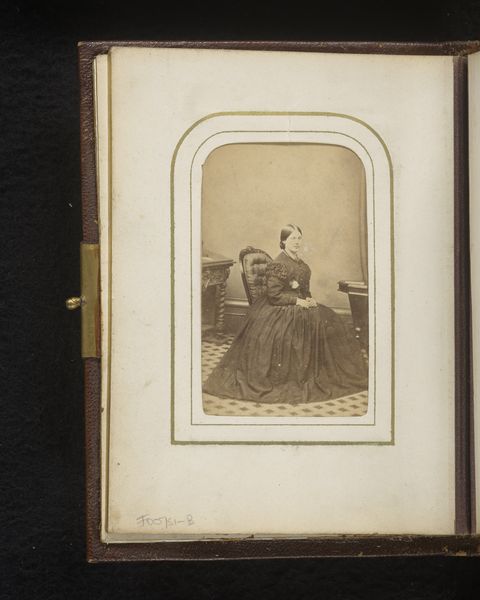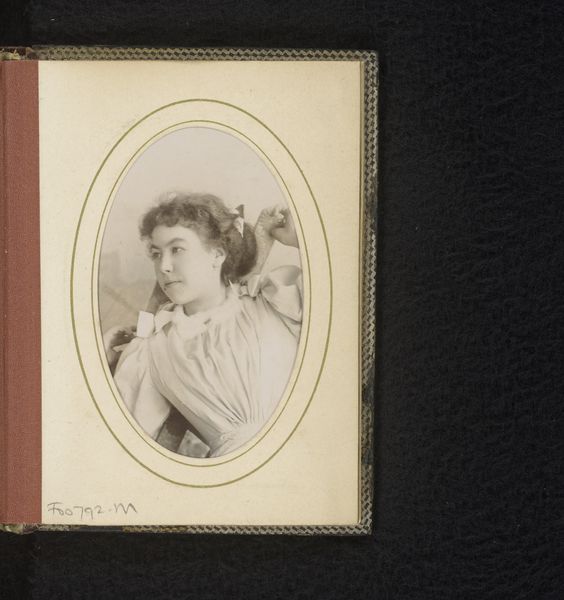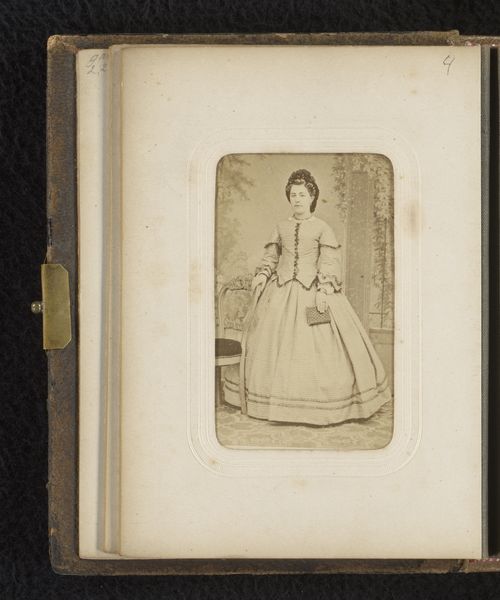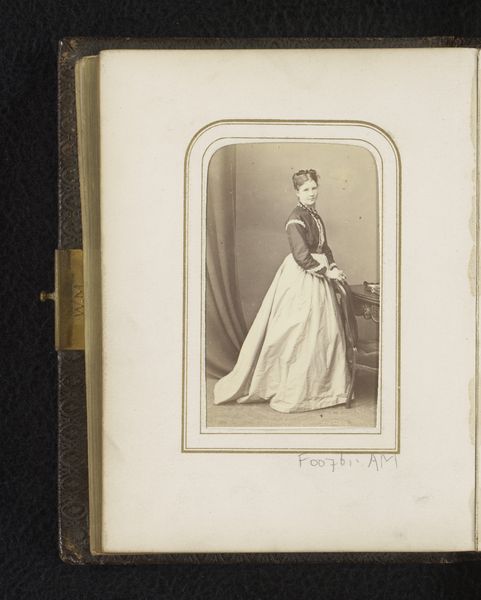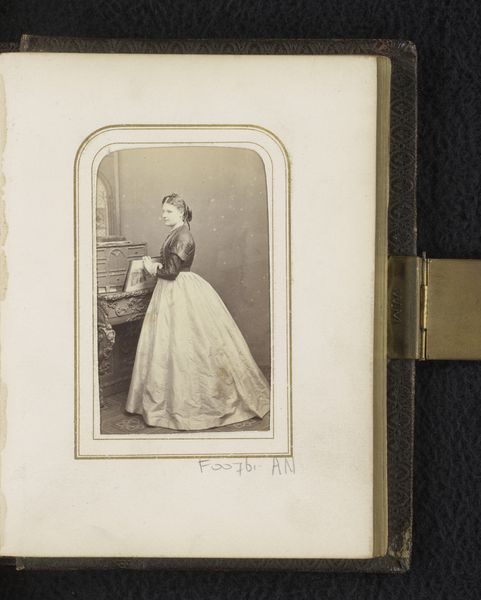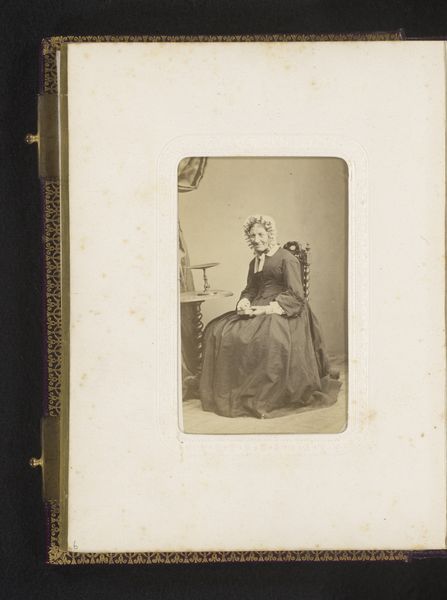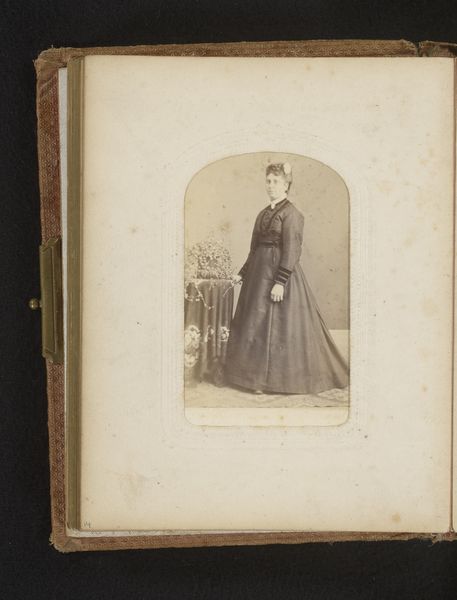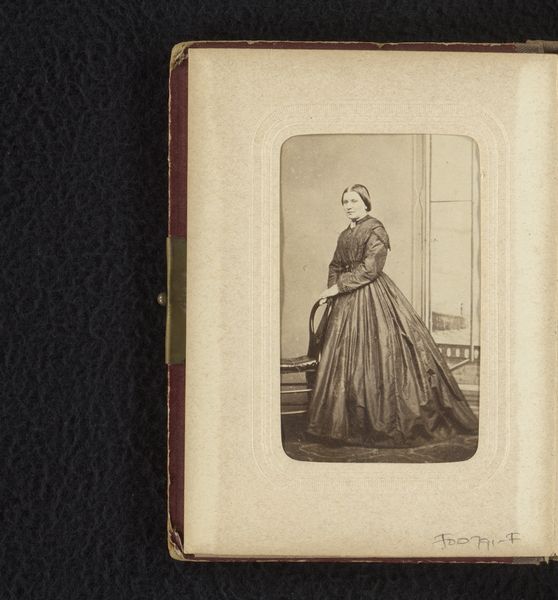
photography, albumen-print
#
portrait
#
photography
#
coloured pencil
#
albumen-print
Dimensions: height 85 mm, width 51 mm
Copyright: Rijks Museum: Open Domain
Curator: Here we have a striking piece—a photographic portrait, titled "Portret van Johanna Geertruida Jonker-Nije," created sometime between 1870 and 1890 by Alexandre & Cie. It's an albumen print, a very common format at the time. Editor: The woman’s dress is beautiful and rather theatrical with that ruffled hem. It's a surprisingly intimate portrayal, though she’s so properly posed, isn't she? Her whole demeanor reads as carefully considered. It is beautiful. Curator: Exactly. The albumen print process itself is interesting; involving coating paper with egg whites to create a glossy surface for the silver image to sit upon. This process produced an abundance of incredibly sharp and tonally rich photographs, immensely popular because of their reproducibility in an era when portraiture was only really accessible to the upper classes. Note also the colored pencil applied which was sometimes applied to add details and color, highlighting certain features or elements of the image. Editor: It really softens the photograph's sharp lines, makes her almost glow from within, especially highlighting the pale colors of her skin. I'm wondering about her relationship to the photographer though. There's a distance, of course—they are formal portraits—but there's also a clear desire on her part to project an ideal self. Curator: Absolutely. Consider the social context, too. Studio portraiture provided an arena to perform respectability, to construct identity within increasingly codified social structures. An object like this photo album—materializing from darkroom chemistry and printing—functions as a container of narratives, encoding social aspirations, economic status, and domesticity. Editor: It reminds me of a character from a book, one that might come to life on the page, and perhaps Johanna too thought this photo would live a long life... Curator: It certainly has. Analyzing how this portrait embodies larger networks of exchange between artist, sitter, studio staff, and audiences offers such a view into the cultural history. Thanks for your insights! Editor: My pleasure; it’s easy to get lost in Johanna's gentle gaze. What stories these portraits could tell.
Comments
No comments
Be the first to comment and join the conversation on the ultimate creative platform.

